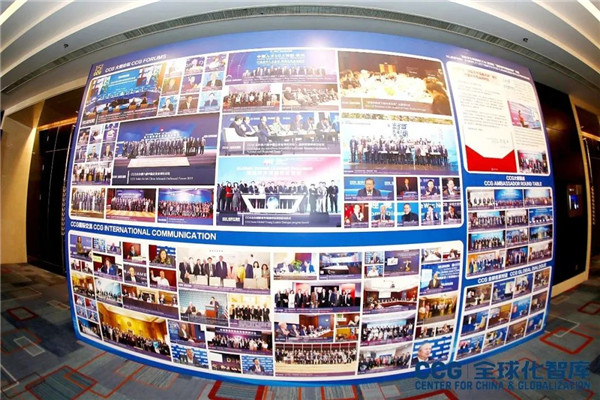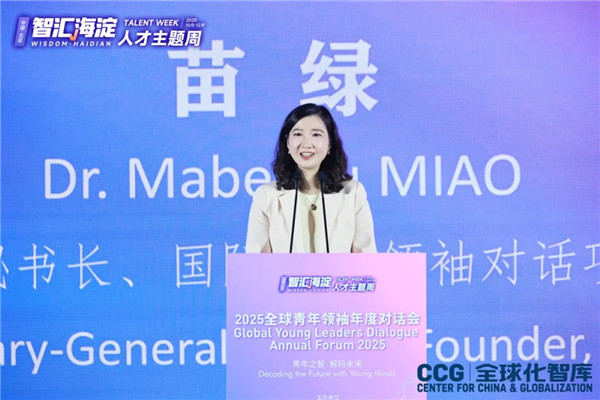【China Daily】The multilateral trade system must be protected
September 21 , 2018By Wang Huiyao, founder and president of the Center for China and Globalization(CCG).
In response to potential rise of industrialized trading bloc, China should strengthen regional ties, improve mutual understanding
While the United States and China remain deadlocked in an escalating trade dispute, recent signs indicate that the administration of US President Donald Trump is moving to resolve differences and draw up new agreements with other major trading partners. This raises uncertainty over the future of the World Trade Organization-based multilateral trading system and points to the possible emergence of a zero-tariff club of select developed nations.
Following this path could fragment the international trading system and harm the long-term interests of developed and developing nations alike. At this crossroads, it is important that world leaders work to protect and reinvigorate the multilateral trading system that has underpinned global growth and development over the past few decades.

It is no secret that Trump is dissatisfied with the current multilateral trading system. He wants to reconfigure international trade architecture to put the US in a stronger position and is impatient with the WTO, which he sees as unwieldy and inefficient. Indeed, in a recent interview, Trump threatened to withdraw unless the organization treats the US better.
Rather than work through the WTO, Trump shows a preference for pursuing free trade agreements with developed countries. This is seen as a way to achieve faster results and take advantage of America’s considerable leverage in bilateral negotiations.
This summer has seen tentative steps toward a free trade agreement between the US and the European Union. When European Commission President Jean-Claude Juncker visited Washington in late July, the US and EU agreed to step back from the brink of a trade war and work toward “zero tariffs, zero nontariff barriers, and zero subsidies on nonauto industrial goods”. With this joint statement, Trump declared “a new phase in the relationship between the US and the EU”.
The Trump administration is also pushing for an FTA with Japan. Tokyo would prefer that the US return to the Trans-Pacific Partnership, from which Trump withdrew on his first day in office. However, the chances of this seem remote, and with Washington wielding the threat of slapping tariffs on imports of Japanese autos, some kind of compromise between the US and Japan is eventually likely.

While moves toward a zero-tariff area of industrialized nations would face significant opposition in participating countries, not least from influential industries, some of the preliminary building blocks are already falling into place. The EU has an FTA with Canada and recently signed an economic partnership agreement with Japan. Other developed nations such as Australia and New Zealand would also likely be drawn to the prospect of zero-tariff trade with such a large combined market. A zero-tariff area covering the US, EU and Japan would represent more than 60 percent of global GDP.
If such a trading bloc of developed countries was to emerge, it could leave billions of people in developing countries locked out of major markets and stymie the development of mutually beneficial trade ties across the world.
How should China respond to the potential rise of an industrialized trading bloc? I believe it is important to focus on the three objectives outlined below, namely protecting the multilateral system, strengthening ties with key regions and improving mutual understanding by telling China’s story to the world.
First, it is important that China continues to play an active role in revitalizing the multilateral trading system. Despite opposing currents that have emerged in some countries, most still see globalization as a positive force. Joint efforts by China and all concerned economies should be made to transform globalization 1.0 to globalization 2.0.
The current WTO-based system needs to be updated to serve the interests of all countries and reflect structural shifts in the global economy. Multilateral negotiations should focus on concrete issues and be open and transparent to enable the full and fair participation of all countries. While upholding the principle of consensus decision-making, the WTO should also consider increasing use of plurilateral agreements (those between more than two, but not a large number of, countries) or introducing an executive committee to make decision-making more efficient.
WTO members should also be mindful of a creeping trend of invoking national security exceptions to justify unilateral imposition of tariffs. Misusing the national security exception, such as when applied to normal products, threatens the integrity of the WTO regimen and could become increasingly misused as a pretext for unrelated protectionist objectives, if not checked.
There is also a need to reform the dispute resolution mechanism to ensure that cases are resolved in a timely manner. The present situation of certain WTO members vetoing the appointment of appeals judges also threatens the mechanism’s ability to continue operating in its current form. In addition, under the WTO framework, China could help to build new platforms for international cooperation in key areas such as e-commerce, cyberspace and global talent.
As well as working with WTO members, we should also cooperate with other parties that share interests in protecting an open trading system, such as multinational corporations. These entities rely on global value chains and smooth cross-border trade and have significant interests in China in particular. Each year, US companies take in total revenues of $200 billion (171 billion euros; £152 billion) to $300 billion in China. We should increase dialogue with these companies and help them to play effective roles as advocates for free trade in their home country.
Second, to supplement efforts to protect the multilateral system, China should work to strengthen relations with countries in key regions.
This should start with deepening ties with our neighbors. Asian countries are already among China’s biggest trading partners, with important shared geographical, historical and cultural links. Emerging economies such as India and Indonesia have burgeoning young populations, promising growth potential and a high degree of complementarity with China.
Building institutions to facilitate closer integration, as has been done in the EU, would contribute much to regional stability and prosperity. China should strive to complete talks on the Regional Comprehensive Economic Partnership promptly and also consider joining the new Trans-Pacific Partnership. Both of these agreements represent potential pathways toward forming a Free Trade Area of the Asia-Pacific, a long-term goal to link Pacific Rim economies.
Looking beyond Asia, China should build on its friendly ties with African countries to enhance economic cooperation with Africa. China has forged friendly links with African citizens and leaders, and Sino-African trade has grown rapidly from just over $10 billion in 2000 to $170 billion in 2017, according to the Ministry of Commerce. There are enormous potential synergies between China, with its capital and relevant expertise such as infrastructure development, and Africa, which has great promise with a young, growing labor force, large consumer markets and eagerness for investment to overcome infrastructure gaps and unlock growth potential. The initiatives outlined in the action plan approved at the recently concluded Forum on China-Africa Cooperation summit in Beijing reflect the broad range of areas in which China and Africa can work together, from energy and industrialization to transportation and tourism.
Third, at present, international relations are beset by widespread misgivings and misunderstandings toward the intentions of other countries. This situation can easily cause a slide toward zero-sum thinking at a time when global cooperation is more important than ever before.
In this environment, it is important that we engage in effective dialogue with other countries, listening to concerns and speaking with a clear voice to explain China’s plans and ensure that they are not misconstrued. Think tanks such as the Center for China and Globalization have a valuable role to play in these efforts by providing channels for informal communication and by generating ideas for cross-border cooperation. In this way, China can work with other countries to build a community of shared future for all humankind based on shared principles and mutual understanding.

Dr. Wang Huiyao is founder and president of the Center for China and Globalization(CCG), the largest social independent think tank in China, and also a counselor to the State Council, China’s Cabinet.
Topical News See more






